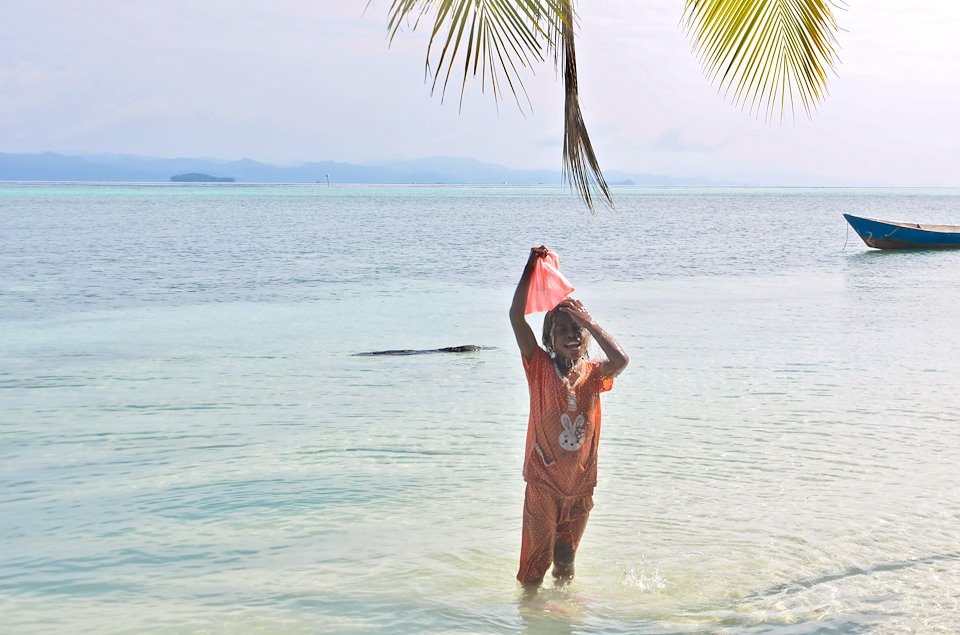
© Fabiola Minda all rights reserved
•
Kri, West Papua, Indonesia
Vanessa has found a plastic bag adrift and is using it for bathing. The growth of tourism has seen a spread of plastic pollution. Plastic waste is visible on the coasts of most of the islands in the archipelago of Raja Ampat.
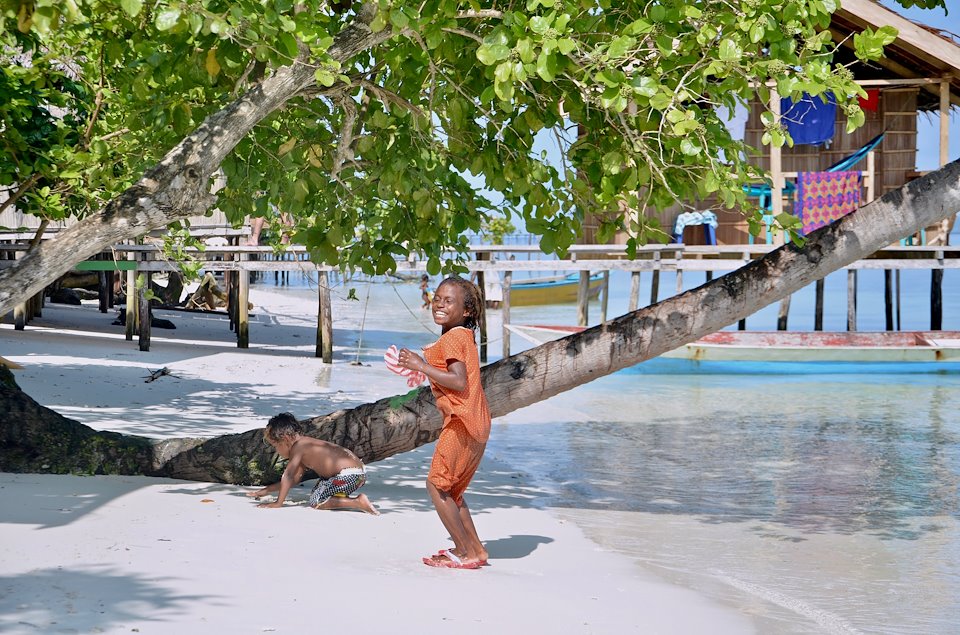
© Fabiola Minda all rights reserved
•
Kri, West Papua, Indonesia
This plastic bag has turned immediately into a new toy.
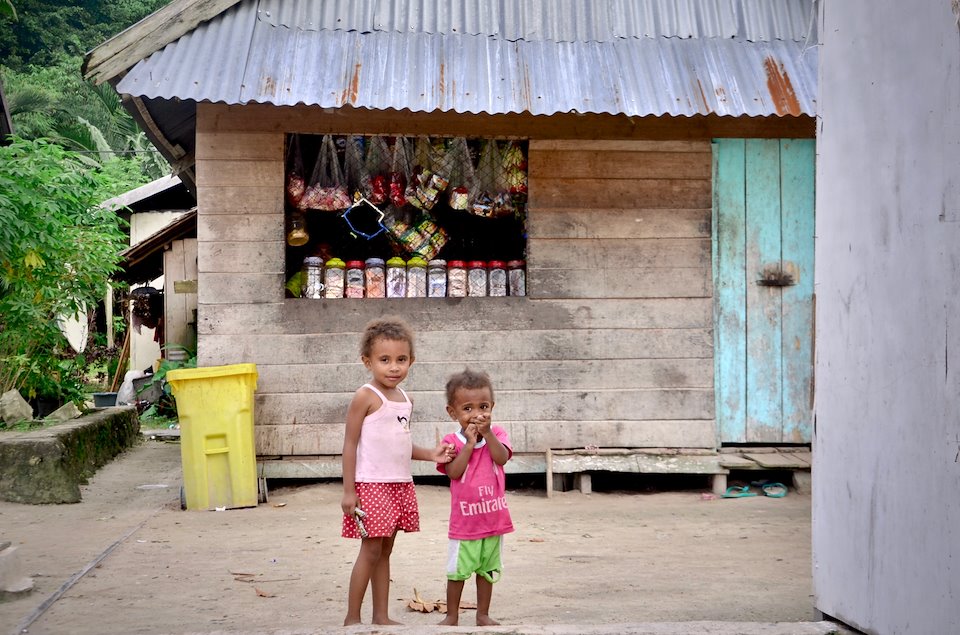
© Fabiola Minda all rights reserved
•
Pulau Mansuar, West Papua, Indonesia
Two girls have just bought candies at a local mini market. Raja Ampat’s islands don’t have a proper rubbish management system in place, hence the trash that enters the island stays in the island, is incinerated, buried or drifts away with the waves.
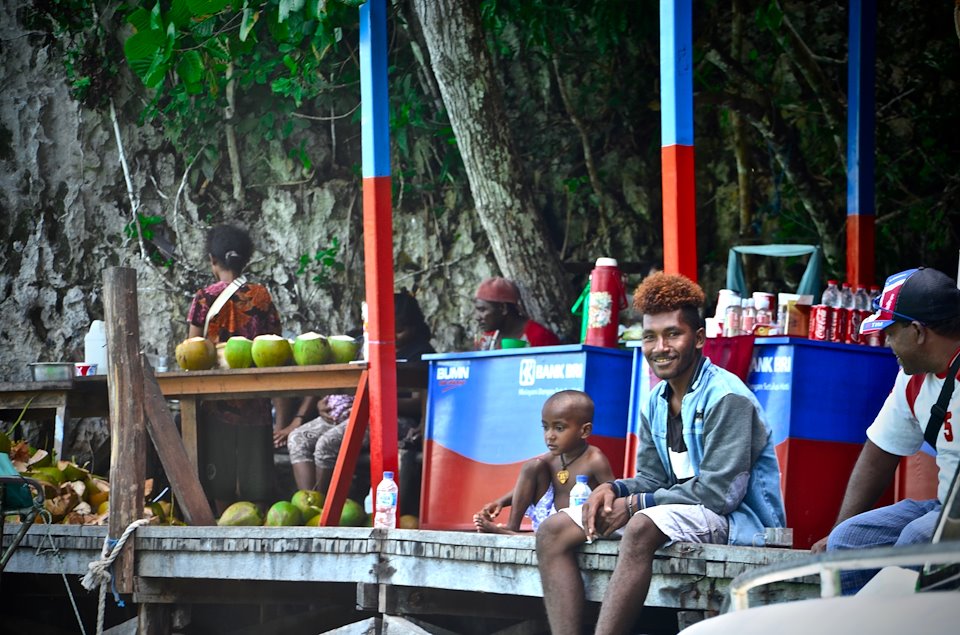
© Fabiola Minda all rights reserved
•
Pyanemo island, West Papua, Indonesia
Bottled water and soft drinks are sold at the entrance of one of the most beautiful viewpoints of the archipelago of Raja Ampat, an area where it’s strictly forbidden to throw rubbish away.
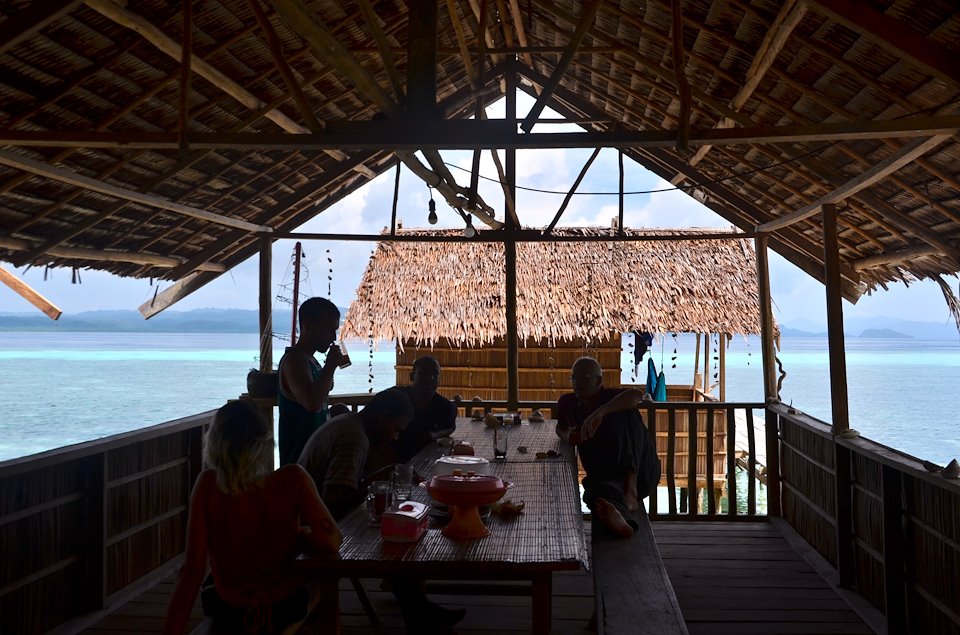
© Fabiola Minda all rights reserved
•
Kri, West Papua, Indonesia
A group of tourists is having breakfast in a Homestay.
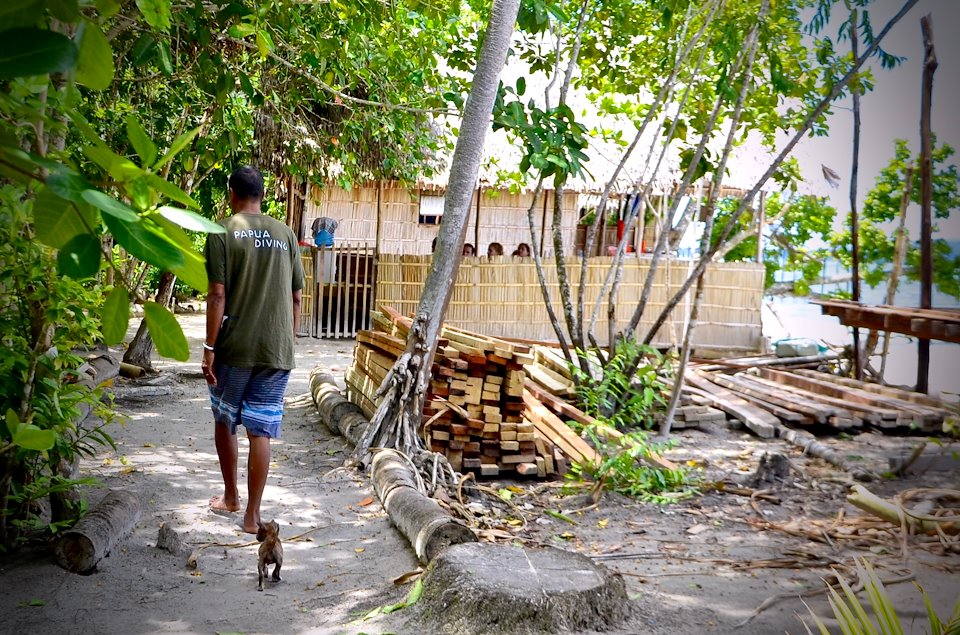
© Fabiola Minda all rights reserved
•
Kri, West Papua, Indonesia
New bungalows are built due to the increasing amount of visitors to Raja Ampat. Nevertheless, the archipelago may not be fully equipped to deal sustainably with these visitors.
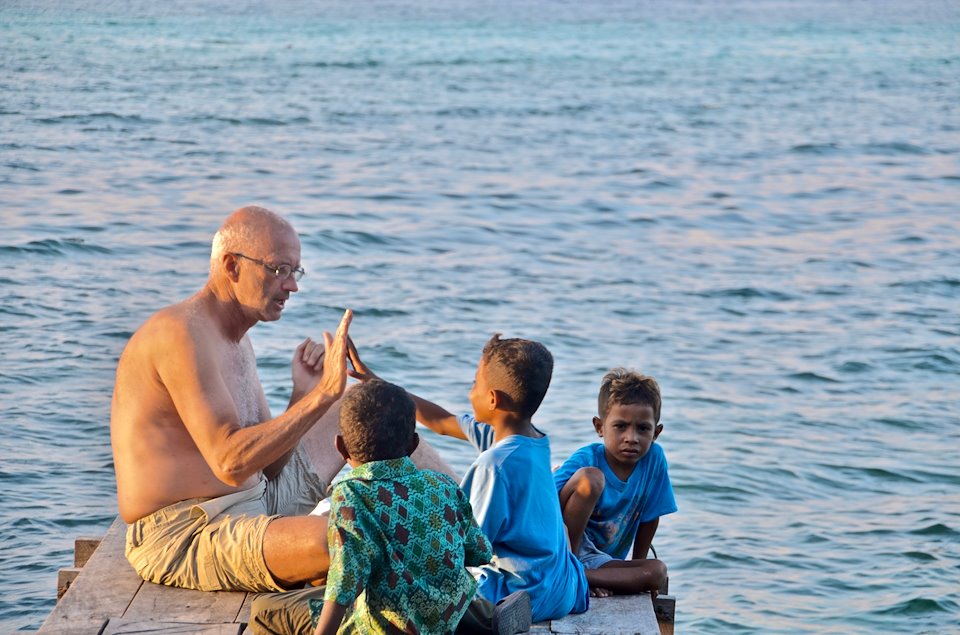
© Fabiola Minda all rights reserved
•
Kri, West Papua, Indonesia
A tourist plays with the local kids around sunset time. Some of the children understand and speak a little English that learns from the visitors.
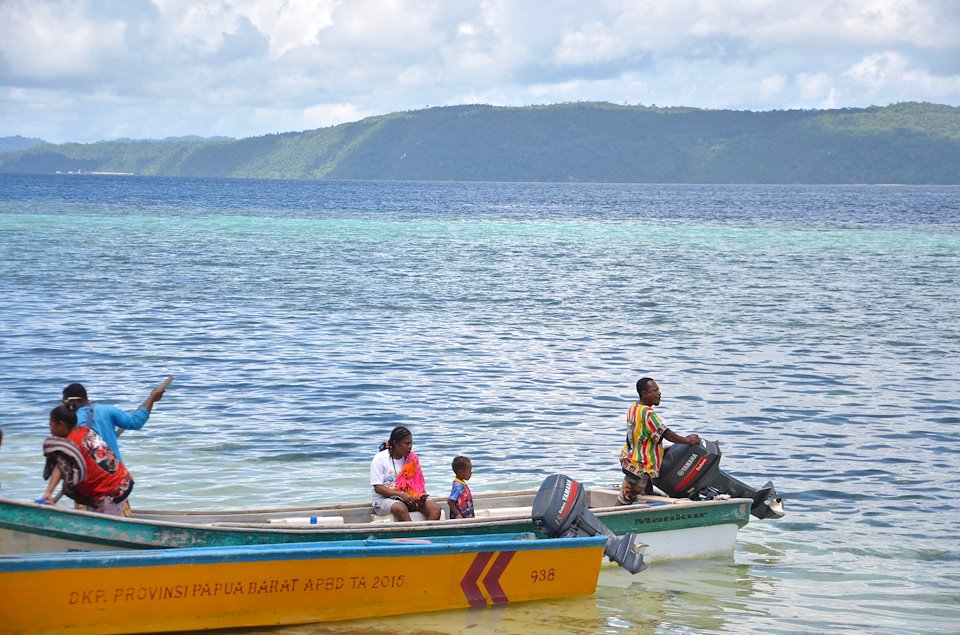
© Fabiola Minda all rights reserved
•
Kri, West Papua, Indonesia
A water taxi is leaving after bringing in tourists from Waiwo to Kri island. Tourism has given many job opportunities to the communities of Raja Ampat.

© Fabiola Minda all rights reserved
•
Pulau Mansuar, West Papua, Indonesia
A mother walks with her baby in the pier of Mansuar island. Raja Ampat is home to 50,000 families and to one of the richest biodiversity, marine, and inland. The growth of plastic pollution might be a threat to both.
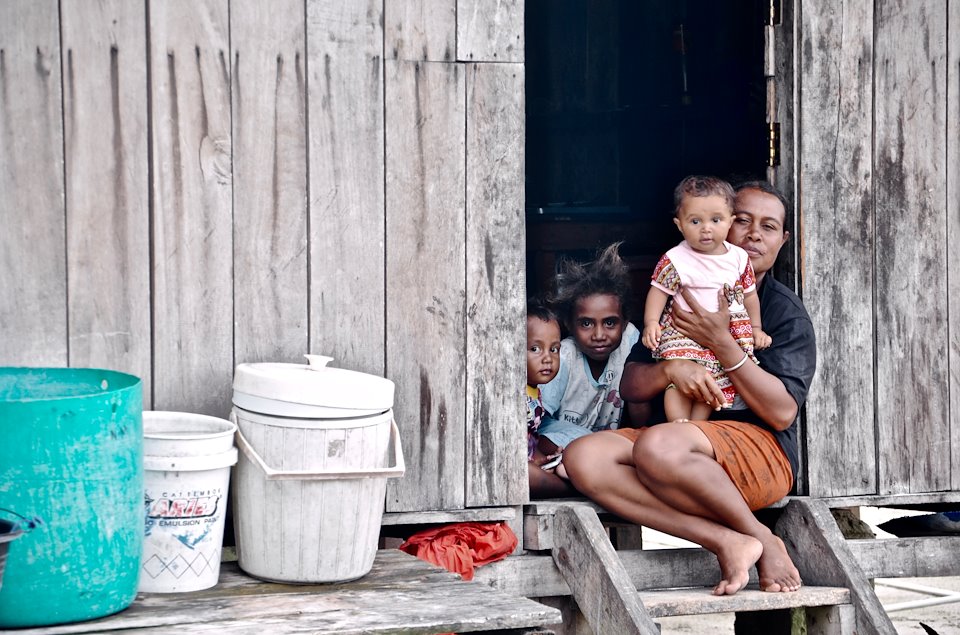
© Fabiola Minda all rights reserved
•
Pulau Mansuar, West Papua, Indonesia
A mother poses with three of her five children. West Papua wants to become the first conservation province of the world – and hence get to protect their resources – but that petition is still awaiting for support.